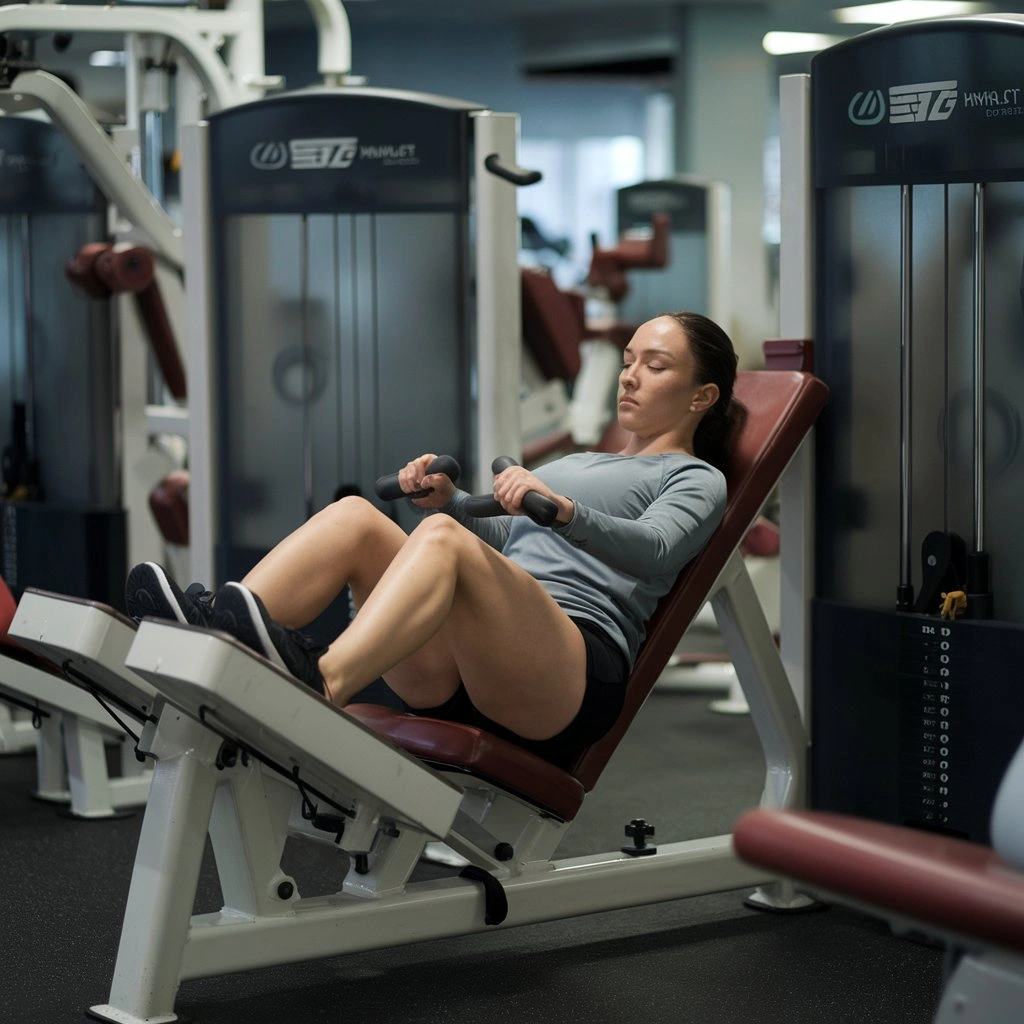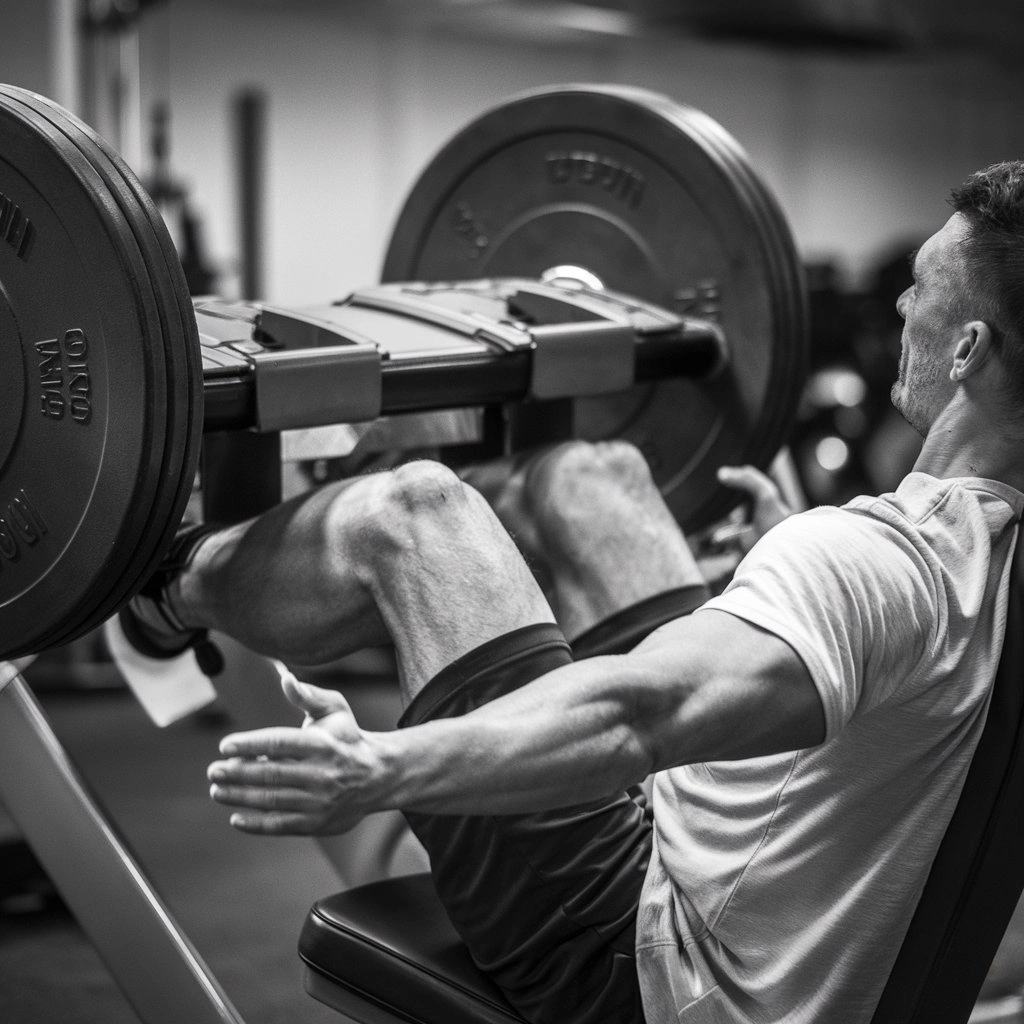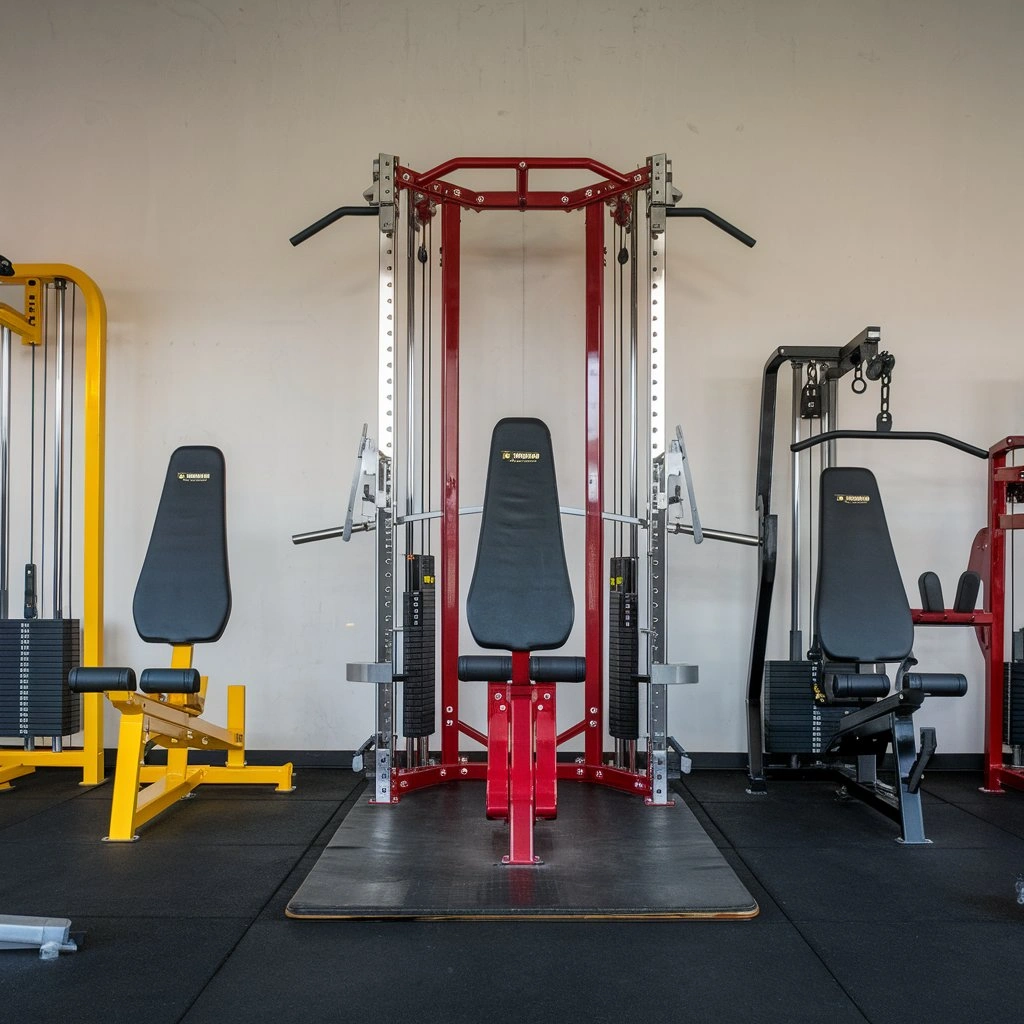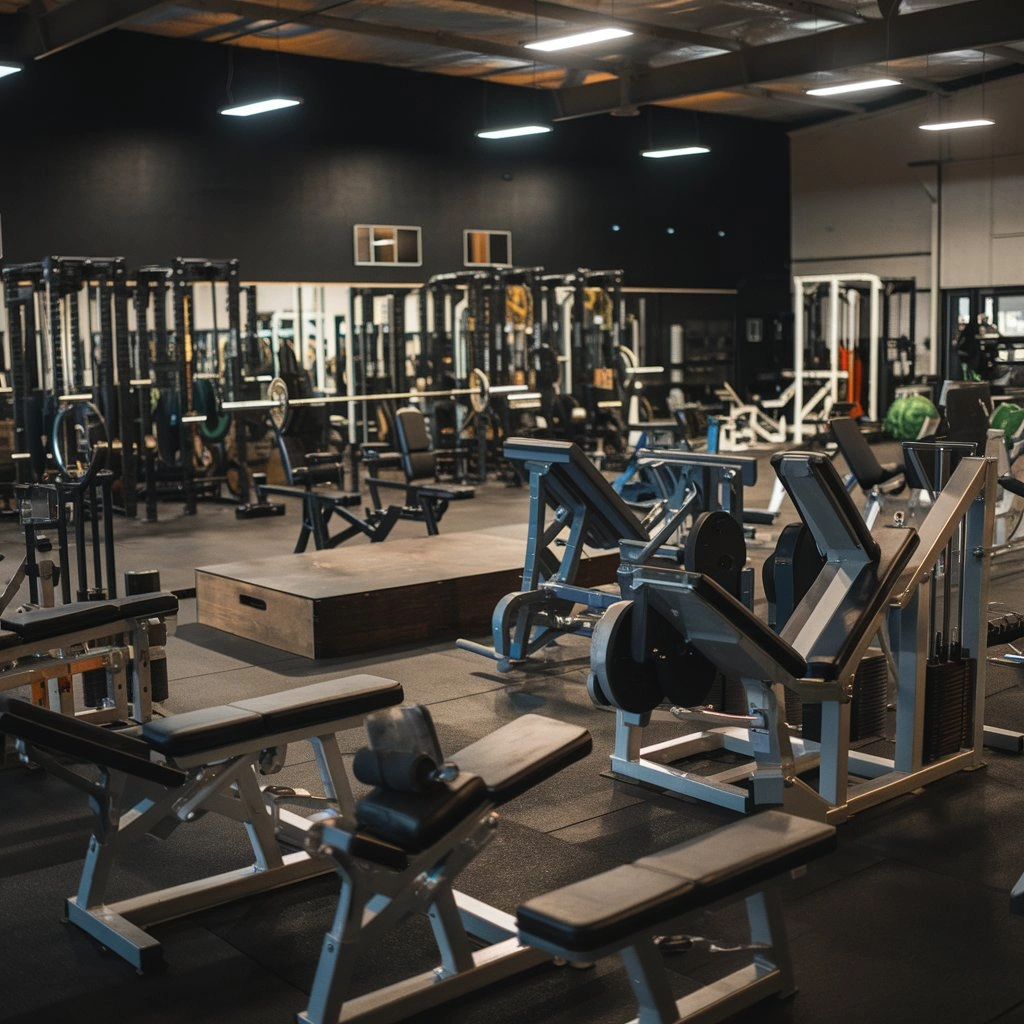Have you ever wondered about those cool gym machines where you sit down and push a platform away with your legs? Those are different leg press machines. They’re a great tool to add serious power to your lower body workouts!
Leg press machines are like workout buddies for your legs. They help you build strength, size, and fitness in your quads. Quads are the muscles in the front of your thighs. The exercises also work your glutes (your butt!) and hamstrings, the muscles in the back of your thighs. They’re kind of like a fancy way to do squats but without all the balancing needed.
Strength training is like giving your muscles a superhero makeover. You make your muscles work harder by using weights or resistance machines. For example, leg presses. This helps them grow stronger. This can benefit you in many ways. It can help you run and jump better and feel more confident in everyday activities. These include climbing stairs and carrying groceries.
But why are leg press machines so special? Here’s the lowdown
- Leg presses are easy to use. Unlike squats, you don’t have to worry about balancing a barbell. Leg Press Machines offer a safe and supported environment. This makes them perfect for beginners or anyone recovering from injuries.
- Focus on your legs: Leg presses isolate your leg muscles, allowing you to target them directly. This can be helpful if you want to build specific strength in your lower body.
- Control the weight. Most leg press machines have weight stacks. They let you choose how much resistance to work with. This allows you to increase the challenge as you get stronger.
- Leg press machines have different foot placements. They let you focus on different leg muscles. This adds variety to your workouts and keeps things interesting!
 Traditional Leg Press Machine
Traditional Leg Press Machine
The Traditional Leg Press Machine is the workhorse of lower body training. It’s the one you’ll likely see most often in gyms, and for good reason! Let’s take a closer look at its design and features.
Built for Power
Imagine a comfortable seat with a backrest, positioned at a 45-degree angle. Below it lies a platform that slides back and forth on a track. That’s the basic design of a traditional leg press machine. Your legs extend straight out in front of you, and you push against the platform with your feet to lift the weight. This simple design allows for a safe and controlled leg workout.
Packed with Functionality
Now, let’s explore the features that make this machine so great:
- Most leg press machines allow you to adjust the seat back and forth. This helps ensure proper leg extension. It makes the bike comfortable for different body types.
- The foot platform is where you place your feet. It can be textured or have grips to prevent slipping. Some machines even offer different foot placement options. For example, a wider stance targets your glutes and a narrower one targets your quads.
- Traditional leg press machines come in two main flavors:
- These machines are plate-loaded. They have weight plates that you add or remove to adjust the resistance. They’re for experienced gym-goers. They want to add weight over time to challenge their muscles.
- Selectorized: These machines use weight stacks with selector pins. Choose the weight you want by inserting the pin at the desired weight setting. They’re ideal for beginners. They’re also good for those who prefer a more convenient weight system.
Variations on a Theme
The basic design is similar. But, there are a few variations of the traditional leg press machine:
- Hack Squat Attachment: Some machines offer an optional leg press hack squat attachment. This lets you do a squat-like movement while seated on the leg press machine. It gives a different way to exercise.
- Angled Leg Press: This variation has a steeper seat angle (often 90 degrees) that might feel closer to a traditional squat. It can put more emphasis on your quads.
 Vertical Leg Press Machine
Vertical Leg Press Machine
The traditional leg press isn’t the only game in town. Let’s shift gears. Let’s discover the vertical leg press machine. It’s a unique option for lower-body training.
A Different Kind of Press
Imagine lying flat on your back with your feet secured on a pad that slides up and down vertically. That’s the basic design of a vertical leg press machine. You push the pad up with your legs. You work against resistance stacks or weight plates. This upright position offers a different training experience compared to the traditional machine.
Weighing the Pros and Cons
Both machines target your lower body. But, there are some key differences to consider:
Advantages
- Reduced Stress on Back: If you have lower back issues, the vertical leg press can be a lifesaver. The supported lying position takes the pressure off your spine, making it a safer option.
- Improved Core Engagement: The press might need more core stability. This is to keep proper form during the exercise. This can be a bonus for building core strength.
- Vertical movement might stress your quadriceps more than the traditional press.
Disadvantages
- They have lower weight limits. This might limit the progression for very strong individuals.
- The vertical movement might not mimic real-world activities well. It is not as close as exercises on the traditional press.
- Vertical presses have a limited range of motion. Depending on the design, some might restrict your leg extension. They do this compared to the traditional option.
Muscle Matchup
Both traditional and vertical leg presses target your quads, glutes, and hamstrings. But, the emphasis may differ slightly:
- The old leg press provides a balanced workout. It works your quads, glutes, and hamstrings.
- The Vertical Leg Press may emphasize your quads. It may also engage your core a bit.
Hack Squat Machine
The hack squat machine offers a unique twist on the traditional squat. It combines some of the benefits of the squat with the control of a machine. Let’s explore its design and the mechanics of the hack squat exercise.
A Squat with a Twist
Imagine a padded backrest. Your feet are shoulder-width apart on a platform that slides up and down. Unlike a traditional squat, your body remains upright throughout the movement. This is the essence of the hack-squat machine.
The Mechanics of the Hack Squat
- Sit comfortably. Your back should press against the backrest. Your feet should be firmly planted on the platform.
- The Push requires you to keep your core engaged and back straight. Extend your legs at the knees to push the platform upward until they are straight. Breathe out during this pushing phase.
- Lower the platform slowly to the starting position. Inhale as you control the descent. Focus on maintaining proper form throughout the movement.
Benefits and Considerations
The hack squat offers some unique advantages:
- Less Stress on Back: It’s like the vertical leg press. It supports your back and reduces stress on your spine. This makes it good for those with lower back pain.
- The upright posture may put more emphasis on your quads than a free-weight squat. This lets you target them more directly.
- Machine guidance is easier to learn than a free-weight squat for beginners. It promotes proper form.
However, there are also some considerations to keep in mind
- The hack squat might not engage your hamstrings as well as a free-weight squat. This is because it has limited hip flexion.
- Potential Knee Strain: Improper form or excessive weight can put a strain on your knees. It’s crucial to maintain proper knee alignment throughout the movement.
- The hack squat is also less functional. It is like the vertical leg press. It doesn’t copy the real-world squat as well as a free-weight squat.
 Horizontal Leg Press Machine
Horizontal Leg Press Machine
We’ve tried vertical presses and hack squats. But, the classic has no substitute. Let’s revisit the leg press machine. We’ll explore its design. We’ll also look at how it differs from others. We’ll cover its unique advantages and considerations.
The Familiar Friend
Imagine a comfortable seat with a backrest positioned at a 45-degree angle. Below it lies a platform that slides back and forth on a track. Sounds familiar, right? That’s the core design of the horizontal leg press machine, the one we covered in the first section. This machine mimics a lying-down leg press exercise. It offers a stable and controlled place for lower body training.
A Tale of Three Presses
The horizontal leg press is like the vertical and hack squat. But, there are key differences.
- This is the Movement Pattern. The press is horizontal. It allows for a more natural leg extension. It’s better than the vertical press. It also offers a more controlled descent than the hack squat.
- Muscle Focus: The horizontal press works your quads, glutes, and hamstrings. It gives a more balanced workout than the traditional press.
- Horizontal leg presses have higher weight capacities than vertical presses. This makes them good for advanced lifters.
Weighing the Options
The horizontal leg press offers several advantages:
- It allows for a natural leg extension. It targets many lower body muscles well.
- The seated position gives great support for your back and core. It makes it a safe option for beginners or those recovering from injuries.
- Progressive Overload is the key. Most horizontal presses have high weight limits. You can add weight as you get stronger.
But, there are also some considerations
- The horizontal press needs less core stability. This is compared to exercises like squats or lunges.
- It has less functional movement. It is like a lying-down leg press. But, it might not fully copy real-world movements, like squatting or climbing stairs.
Leg Press Machines in Rehabilitation
Leg press machines aren’t for building muscle in the gym; they play a vital role in physical therapy too. Let’s explore how these machines help with rehab. We’ll also look at the changes therapists make. We’ll cover the benefits of preventing and healing injuries.
Stepping Stones to Recovery
Physical therapists use leg press machines for various reasons
- Controlled Strengthening: After an injury or surgery, regaining leg strength is crucial. Leg press machines provide a controlled space. Therapists can adjust the weight and range of motion. This allows them to rebuild muscle strength step by step.
- Leg press machines reduce stress on injured joints. They are better than free weights for knees or ankles. This allows for targeted muscle strengthening. It avoids the risk of making the injury worse.
- Improved Balance and Stability: Some leg press machines offer foot placement variations. Therapists can use these to target specific muscles. They can also be them to improve balance and stability.
- Recovering from knee or hip surgery? Leg press machines can help. They offer a safe way to regain leg strength and motion.
Modifications for Individual Needs
Therapists can adapt the leg press machine to suit different rehabilitation needs:
- Adjust the weight. Start with minimal weight and slowly increase it. This approach ensures safe, controlled muscle strengthening.
- Therapists might limit the leg extension range, depending on the injury. They do this to prevent strain on healing tissues.
- Seating Modifications: Add more cushions or wedges. They ensure proper posture during the exercise.
- Therapists use leg press variations. They, for example, use the hack squat attachment on the leg press machine. They do this to target muscle groups involved in rehab.
Benefits Beyond Recovery
Leg press machines offer valuable benefits for injury prevention and recovery
- Stronger leg muscles and better balance can prevent falls and injuries. This helps in daily activities.
- Leg press exercises can speed healing after an injury. They help with controlled strengthening.
- Strong leg muscles help stabilize joints. This reduces stress and the risk of future problems.
- Regaining lost strength and mobility can boost confidence. It can motivate people to stay active during recovery.
 Comparison of Different Leg Press Machines
Comparison of Different Leg Press Machines
Leg press machines are a staple in any gym. But, with many types available, choosing the right one can be hard. Let’s look at the strengths and weaknesses of each type. We’ll consider their suitability for different fitness goals. We’ll also cover what gym owners and personal trainers should consider.
Strengths and Weaknesses
- Traditional Leg Press
- Strengths: It is versatile. It allows for balanced muscle targeting. It is comfy and supportive. It has a high weight capacity (great for advanced lifters).
- Weaknesses: Limited core engagement, might not mimic real-world movements perfectly.
- Vertical Leg Press
- Strengths: It reduces stress on the back. It may also focus more on the quads and improve core engagement.
- Lower weight capacity, limited range of motion, less functional movement pattern.
- Hack Squat Machine
- Strengths: Reduced back stress, potential quad isolation, due to machine guidance.
- Weaknesses: Limited hamstring activation, potential for knee strain with improper form, less functional movement.
- Horizontal Leg Press
- Strengths: Versatile, safe, and controlled environment, allows for natural leg extension, high weight capacity.
- Weaknesses: Limited core engagement compared to free-weight exercises.
Fitness Goals and Experience
- Strength Building (Beginner/Intermediate): Traditional or horizontal leg presses are great. They offer support and versatility.
- This is for intermediate/advanced lifters. They can use the vertical leg press or hack squat. But, they must use proper form to avoid knee strain.
- Vertical leg press is a great option due to its reduced back stress.
- Injury Recovery (all levels): A therapist can change any leg press for safe rehab.
Considerations for Gyms and Trainers
- Space: Traditional and horizontal leg presses must have more space than vertical presses.
- Budget: Plate-loaded machines are more affordable than selectorized options.
- Clientele: Consider the fitness goals and experience levels of your target audience when choosing machines.
- Versatility: Opt for machines with adjustable features like foot placement or weight options to cater to diverse needs.
- Safety: Ensure proper maintenance of the machines and provide clear instructions for safe usage.
Conclusion
The world of leg press machines offers a variety of options to strengthen and sculpt your lower body. We’ve looked at the types. We’ve seen what they do and how they can help your fitness journey. Here’s a quick recap:
Key Takeaways
- Leg press machines come in various forms, each with unique strengths and weaknesses.
- Traditional and horizontal leg presses offer versatility and are suitable for beginners and experienced gym-goers alike.
- Vertical leg presses and hack squat machines can be beneficial for those with lower back pain or wanting to focus on specific muscle groups, but proper form is crucial.
- Rehabilitation programs can utilize leg press machines with modifications to promote safe and controlled muscle strengthening during recovery.
Choosing Your Perfect Press
Selecting the right leg press machine depends on your individual needs and goals:
- Strength Building and Versatility: Opt for a traditional or horizontal leg press.
- Quad Isolation: Consider a vertical leg press or hack squat with proper form guidance.
- Lower Back Issues: Choose a vertical leg press to minimize stress on your back.
- Injury Recovery: Work with a physical therapist to modify any leg press machine for a safe and effective rehabilitation program.
Leg Up on Your Fitness
Leg press exercises offer a multitude of benefits for your overall fitness
- Stronger Lower Body: Building stronger quads, glutes, and hamstrings improves athletic performance and daily activities.
- Injury Prevention: Strong leg muscles and improved balance can help prevent falls and injuries.
- Faster Recovery: Leg press exercises can support faster healing after injuries.
- Improved Joint Health: Strong leg muscles stabilize joints, reducing stress and the risk of future problems.
- Confidence Boost: Regaining lost strength and mobility can significantly boost confidence and motivate you to stay active.
Remember: Consulting a certified personal trainer can help you create a personalized workout plan that incorporates the most suitable leg press machine for your goals. Additionally, ensure proper form and technique to maximize benefits and minimize risks.
So, the next time you hit the gym, don’t underestimate the power of leg press machines! With the right choice and proper execution, you can take your lower body workouts to the next level and unlock a stronger, healthier you.

